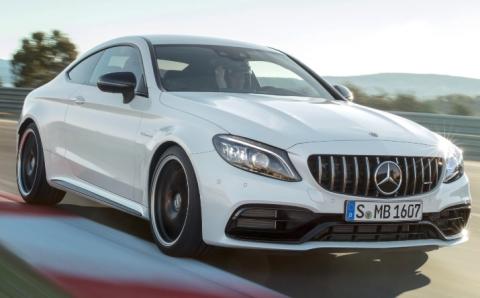New 2020 Bentley Continental GT Introduce https://youtu.be/t1uDJozES0Y
Certain objects are so well known for arriving in groups of twelve that their dodecameralism is almost presumed. This list includes eggs, donuts, roses, inches, hours, months, human ribs, days of Christmas and, correlatively, drummers drumming. We can add to that group the number of cylinders under the hood of a contemporary Bentley. Since 2003, when the venerable British brand rolled out its modern Continental GT, it has sold more than 70,000 of these models, a notable number with an inventive, twin-turbocharged 12-cylinder engine, arrayed in a W configuration.
Unfortunately, the flying-B brand has been having some difficulty meeting certification requirements for its alluring, all-new, 12-cylinder-equipped Continental GT coupe and convertible, which have yet to appear in the States, despite a full two years having lapsed since their unveiling. Fortunately, to stem the tide of demand, the crew from Crewe has certified a version of the Porsche-designed 542-horsepower, 568 pound-feet 4.0-liter, twin-turbo V8 from the Panamera for use in their new two-door, backed up by an eight-speed dual-clutch transmission. It will be available for purchase here, this fall — before it is offered to any other market — by those with 220,000 spare dollars.
Even more fortunate, we just had the chance to drive it through the coastal, mountainous and curvy vineyard regions of Northern California, and we can assure you that, while we still believe Bentley GTs deserve twelve cylinders, eight is the new baker's dozen.
Unless you've spent extended time piloting the Continental GT W12 through some of the most beautiful mountainous regions of Europe and America, as we have, you might not notice the one-third reduction in cylinders, or the 84-horsepower depreciation in output. According to Bentley, the less powerful but lighter motor adds only 0.2 seconds to the 0-60 run (3.8 versus 3.6 for the coupe, 3.9 versus 3.7 for the convertible) not enough of a differential to tip our own internal accelerometer. It also foregoes cresting 200 mph like its bigger brother can, not that there's anywhere you can hit these speeds safely in America anyway.
The V8 also, as referenced above, subtracts a couple hundred pounds from the total weight of the GT, not that this matters all that much in a vehicle that weighs 2.5 tons, but it does take a modicum of gravitational pressure off the front axle. Is it noticeable on first blush? Maybe if you believe that the Conti GT is a gram scale and you're a famed street-level cocaine dealer in some bad '90s movie. The difference you likely feel here is not weight, but suspension and powertrain tuning, which, a product specialist told us, edges a bit more athletic. Compared to the W12, it does feel slightly bitier in the corners, in the way that the Mercedes-AMG S63 coupe feels in contrast to the S65. It's almost like it wants you to know that it's not the most expensive one, but it's trying harder, and you're wise for having made the choice.
Don't worry about the cushy ride suffering, whether you're rolling on the standard 20-inch wheels, or the 21s or 22s we experienced. Credit here goes to the Bentley Dynamic Ride system. First seen on the Bentayga, this adaptive, computer-controlled, 48-volt-powered system helps keep the Conti's steamroller tires firmly planted on the ground without rattling your teeth. And it does it without causing the prodigious body to roll about like some catamaran piloted by your niece's drunk frat bro boyfriend on family vacation. Though this system is optional on the V8, all of the fixed-head and drop-top versions we drove in California featured it, and we can say with certainty that it does the trick of helping to remediate the boulevardier's heft.
Certain objects are so well known for arriving in groups of twelve that their dodecameralism is almost presumed. This list includes eggs, donuts, roses, inches, hours, months, human ribs, days of Christmas and, correlatively, drummers drumming. We can add to that group the number of cylinders under the hood of a contemporary Bentley. Since 2003, when the venerable British brand rolled out its modern Continental GT, it has sold more than 70,000 of these models, a notable number with an inventive, twin-turbocharged 12-cylinder engine, arrayed in a W configuration.
Unfortunately, the flying-B brand has been having some difficulty meeting certification requirements for its alluring, all-new, 12-cylinder-equipped Continental GT coupe and convertible, which have yet to appear in the States, despite a full two years having lapsed since their unveiling. Fortunately, to stem the tide of demand, the crew from Crewe has certified a version of the Porsche-designed 542-horsepower, 568 pound-feet 4.0-liter, twin-turbo V8 from the Panamera for use in their new two-door, backed up by an eight-speed dual-clutch transmission. It will be available for purchase here, this fall — before it is offered to any other market — by those with 220,000 spare dollars.
Even more fortunate, we just had the chance to drive it through the coastal, mountainous and curvy vineyard regions of Northern California, and we can assure you that, while we still believe Bentley GTs deserve twelve cylinders, eight is the new baker's dozen.
Unless you've spent extended time piloting the Continental GT W12 through some of the most beautiful mountainous regions of Europe and America, as we have, you might not notice the one-third reduction in cylinders, or the 84-horsepower depreciation in output. According to Bentley, the less powerful but lighter motor adds only 0.2 seconds to the 0-60 run (3.8 versus 3.6 for the coupe, 3.9 versus 3.7 for the convertible) not enough of a differential to tip our own internal accelerometer. It also foregoes cresting 200 mph like its bigger brother can, not that there's anywhere you can hit these speeds safely in America anyway.
The V8 also, as referenced above, subtracts a couple hundred pounds from the total weight of the GT, not that this matters all that much in a vehicle that weighs 2.5 tons, but it does take a modicum of gravitational pressure off the front axle. Is it noticeable on first blush? Maybe if you believe that the Conti GT is a gram scale and you're a famed street-level cocaine dealer in some bad '90s movie. The difference you likely feel here is not weight, but suspension and powertrain tuning, which, a product specialist told us, edges a bit more athletic. Compared to the W12, it does feel slightly bitier in the corners, in the way that the Mercedes-AMG S63 coupe feels in contrast to the S65. It's almost like it wants you to know that it's not the most expensive one, but it's trying harder, and you're wise for having made the choice.
Don't worry about the cushy ride suffering, whether you're rolling on the standard 20-inch wheels, or the 21s or 22s we experienced. Credit here goes to the Bentley Dynamic Ride system. First seen on the Bentayga, this adaptive, computer-controlled, 48-volt-powered system helps keep the Conti's steamroller tires firmly planted on the ground without rattling your teeth. And it does it without causing the prodigious body to roll about like some catamaran piloted by your niece's drunk frat bro boyfriend on family vacation. Though this system is optional on the V8, all of the fixed-head and drop-top versions we drove in California featured it, and we can say with certainty that it does the trick of helping to remediate the boulevardier's heft.
- Category
- AMG








Comments